
|
Dark Noise in the Olympus E-20 |

| My other articles related to the Olympus E-10 and E-20 cameras |
|
For a general discussion of the noise issues I will refer you to another article at this site; it is recommended that you read it before proceeding down this page. About the samples All samples shown in this page have been taken from "lens cap shots", i.e. exposures in absence of any light reaching the CCD. Pictures were saved in the SHQ (1:2.7) JPEG format, and the in-camera postprocessing was set to defaults, i.e., "Normal" positions of contrast and sharpness. The samples have been taken from the same place in the original image (top-left corner). In order to show the differences between samples more clearly, the published images have been "stretched" in brightness in postprocessing: the 0-32 RGB interval has been expanded to the full 0-255 range; i.e., the brightness of every pixel was increased eight times. Without this exaggeration, in most of the samples the noise would be very hard to see with a naked eye. To illustrate the process, here is a row of "straight" samples, without stretching. Compare it directly with the same images after stretching, shown in the next row below. (Note the hot pixel at the bottom right; it begins to be visible with the naked eye at exposures of 4 seconds; in stretched samples you can easily see it at one second.) |
| Non-stretched (straight) samples | ||||
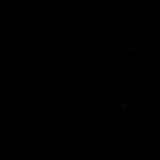
|
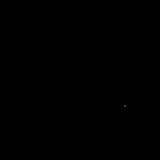
|
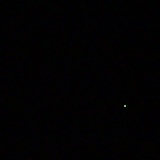
|
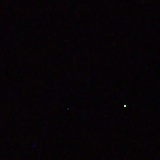
| |
| ISO 80, 1s,NR off | ISO 80, 4s,NR off | ISO 80, 15s,NR off | ISO 80, 60s,NR off | |
|
The data To give you a more or less complete view, I'm showing a set of twelve samples, generated at all four available ISO settings, and at three long exposure times: 1s, 4s, and 15s. Exposures shorter than 1s are not worth bothering with: there is no measurable dark noise there, a very impressive performance! As far as I can see, at ISO 80 noise becomes an issue only at the longest exposures: 15 seconds or more. This is an excellent performance, even better than that of the E-10. | ||||
| Stretched samples: noise exaggerated by a factor of 8x | ||||
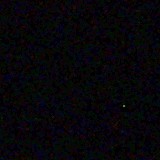
|
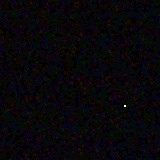
|
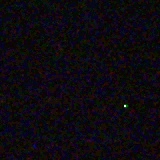
|
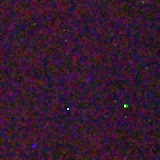
| |
| ISO 80, 1s,NR off | ISO 80, 4s,NR off | ISO 80, 15s,NR off | ISO 80, 60s,NR off | |
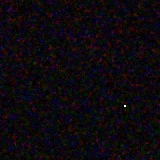
|
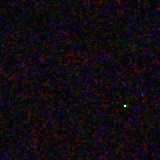
|
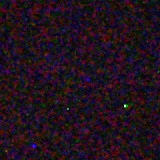
|
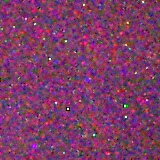
| |
| ISO 160, 1s,NR off | ISO 160, 4s,NR off | ISO 160, 15s,NR off | ISO 160, 60s,NR off | |
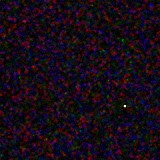
|
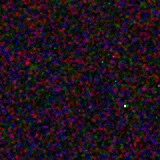
|
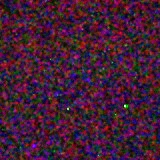
|
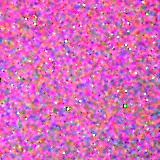
| |
| ISO 320, 1s,NR off | ISO 320, 4s,NR off | ISO 320, 15s,NR off | ISO 320, 60s,NR off | |
|
Noise reduction Now let us have a look at the effects of the noise reduction process. Let me jump straight to the ISO 320 exposures, so that you compare this row of samples with the last one above. | ||||
| Stretched samples: noise exaggerated by a factor of 8x | ||||
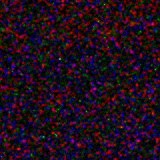
|
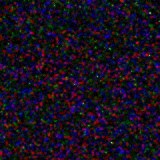
|
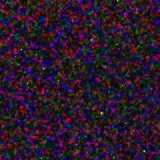
|
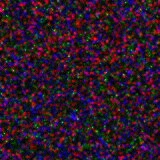
| |
| ISO 320, 1s, NR on | ISO 320, 4s, NR on | ISO 320, 15s, NR on | ISO 320, 60s, NR on | |
|
Clearly, the noise reduction is working; the effects are quite visible. On the other hand, the effects start being visible only when Type I noise prevails, i.e., at exposures longer than 1s. Olympus states in the manual that the noise reduction works at shutter speeds of 1/2s and longer. Really, this is more complicated (and more confusing):
| ||||
-nr-s.jpg)
ISO 320, 1s (F/11), |
As a proof, here is a stretched sample: ISO 320, 1s, and F/11, NR on. It seems nearly identical to the one two rows above it (NR off), not one row (NR on, F/2.4). And yes, I've checked twice. | |||
|
E-20 versus E-10 Almost all reviewers report a marked improvement of the low-light performance in the E-20 as compared to the E-10 (where it was already quite good). Here is a side-by-side comparison, with "stretched" samples shown, E-10 at the top, and E-20 at the bottom. The longest exposure time is 8s, as this is as long as the E-10 will go in the manual mode. | ||||
| Stretched samples: noise exaggerated by a factor of 8x; E-10 (top) vs. E-20 (bottom) | ||||
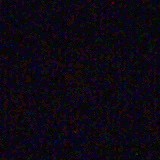
|
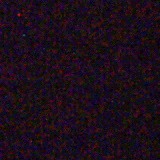
|
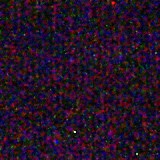
|
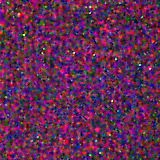
| |
| ISO 80, 1s, no NR | ISO 80, 8s, no NR | ISO 320, 1s, no NR | ISO 320, 8s, no NR | |

|
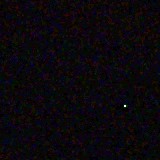
|

|
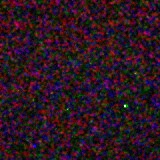
| |
|
While this is not a real measurement, it looks like at ISO 80 and 1s both cameras generate similar amounts of noise. With increasing CCD gain and/or exposure time, however, the E-20 has a clear edge. Related pages
|

| My other articles related to the Olympus E-10 and E-20 cameras |
| Home: wrotniak.net | Search this site | Change font size |
| Posted 2002/04/15; last updated 2004/11/15 | Copyright © 2002-2004 by J. Andrzej Wrotniak |